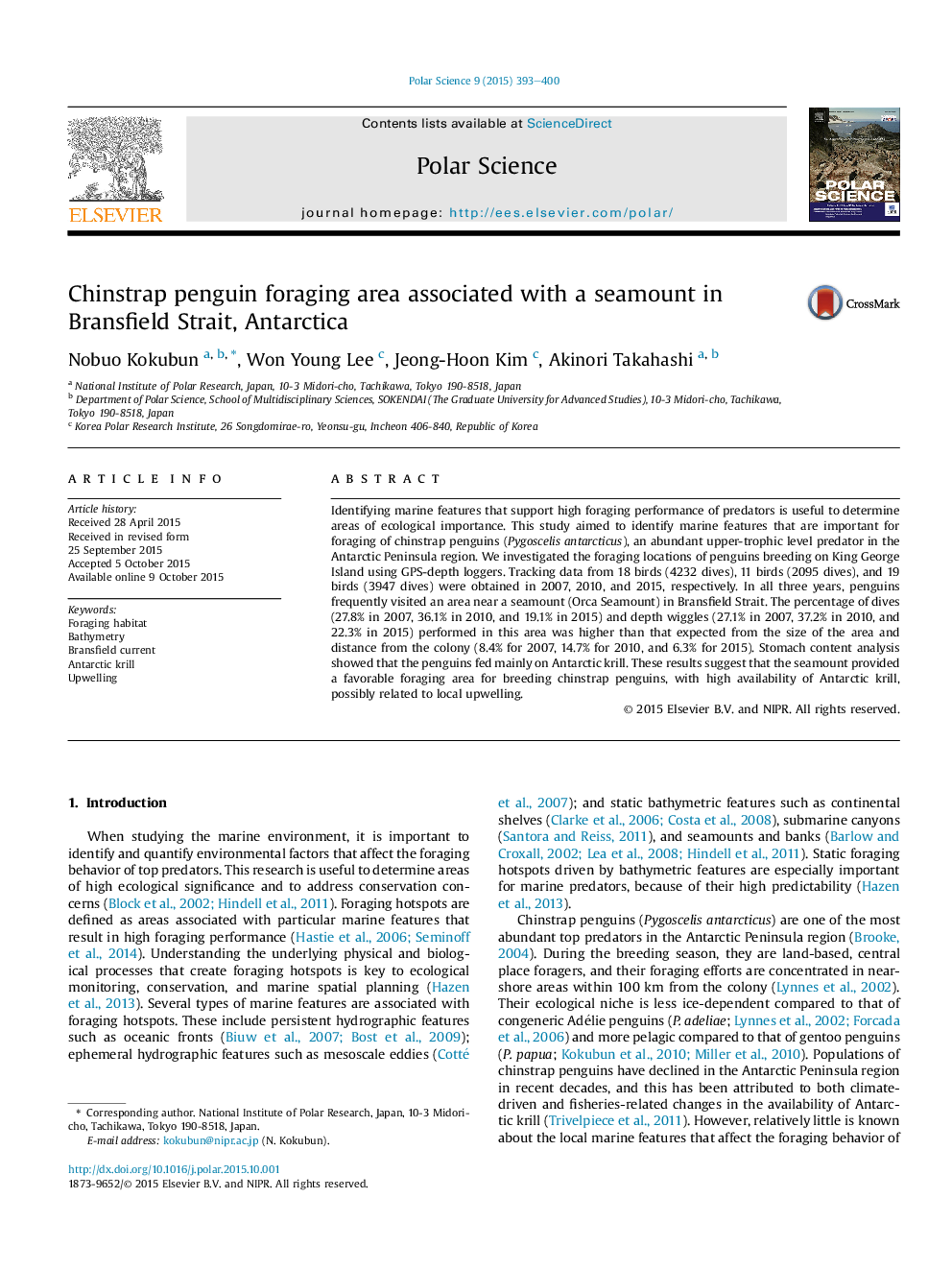| Article ID | Journal | Published Year | Pages | File Type |
|---|---|---|---|---|
| 4683171 | Polar Science | 2015 | 8 Pages |
Identifying marine features that support high foraging performance of predators is useful to determine areas of ecological importance. This study aimed to identify marine features that are important for foraging of chinstrap penguins (Pygoscelis antarcticus), an abundant upper-trophic level predator in the Antarctic Peninsula region. We investigated the foraging locations of penguins breeding on King George Island using GPS-depth loggers. Tracking data from 18 birds (4232 dives), 11 birds (2095 dives), and 19 birds (3947 dives) were obtained in 2007, 2010, and 2015, respectively. In all three years, penguins frequently visited an area near a seamount (Orca Seamount) in Bransfield Strait. The percentage of dives (27.8% in 2007, 36.1% in 2010, and 19.1% in 2015) and depth wiggles (27.1% in 2007, 37.2% in 2010, and 22.3% in 2015) performed in this area was higher than that expected from the size of the area and distance from the colony (8.4% for 2007, 14.7% for 2010, and 6.3% for 2015). Stomach content analysis showed that the penguins fed mainly on Antarctic krill. These results suggest that the seamount provided a favorable foraging area for breeding chinstrap penguins, with high availability of Antarctic krill, possibly related to local upwelling.
